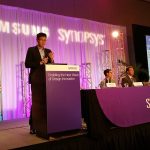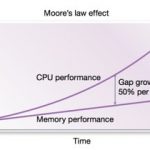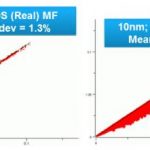This week, we are continuing our discussion of various topics that Semitracks addresses in their training activities. One area that they focus on quite a bit is Semiconductor Reliability and Product Qualification.
One of the key activities that a Product Engineer will coordinate is the qualification of new products before they are released to market. This activity will normally involve running a battery of tests on a sample of the products to determine if the product will be fit for service in the customer’s application. While this activity is normally done according to a standard, like JEDEC JESD-47, MIL-STD 883, or AEC-Q100, there are a number of subtleties that make this activity a challenging one for the engineer. While the standards provide decent instructions and a process to follow, they do not account for a number of items. For example, the customer may have a use condition that is not well addressed by the standard. Consider a chip that will be part of a sensor unit that goes into a well deep underground where the temperature is very high. JEDEC testing does not describe what to do when a chip might operate for an extended period of time above 125°C. Consider a chip that might sit idle in a weapons system for decades, but then needs to work with high reliability after sitting idle all that time. Again, JEDEC, and even the MIL-STD documents don’t describe what to do.
Now you might think that these are extreme cases, and I am just working on a chip that goes into a smart phone. Well, smart phone usage varies widely from person to person. For example, I might use my smart phone primarily for calls or texting, while my son might use his to stream video on YouTube. I don’t do that, because at my age, my eyes can’t see that small of a screen clearly! This means that certain aspects of the smart phone will be stressed differently from customer to customer. Consider other aspects of the use conditions of a smart phone. One person might always have their phone in their back pocket, where the unit undergoes flexing from sitting down on it, while others might put their smart phone in their purse instead. Some might leave their phone in their car during the day, where it is exposed to more temperature cycling, while others might keep their phone with them at home or in their office, and the unit experiences less temperature cycling.
Sometimes the standard doesn’t account for changes in the technology, or the manufacturing process. For example, we might introduce a new package configuration onto the market – take Fan-Out Wafer Level Packaging (FOWLP) for instance. There might be new materials, new manufacturing methods, or new failure mechanisms both during assembly and by the customer to produce the unit and the end system that JEDEC might not address correctly. This might require deviating from the standard to achieve a successful result for the customer.
Finally, the standards are not always worded well. For example, when re-qualifying a product, the standards mention that minor logic changes do not require re-qualification, but major ones do. What constitutes a minor versus a major change? Additionally, the standards do not explicitly call out when you should use a static or dynamic test. These types of “unclear” situations require that the Product Engineer be able to state his or her case in a clear and convincing manner to the customer.
Since there are a number of subtleties around the qualification process, it’s important that the engineer have a strong background and understanding of chip reliability. Semitracks is a leader in this type of training, and has a course that directly addresses this particular topic.
I would encourage anyone who deals with product qualification and reliability testing activities to take this course. It is definitely worth your while, absolutely!






